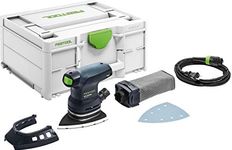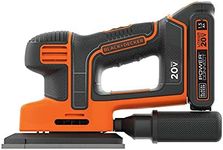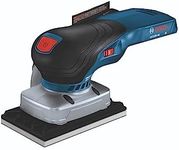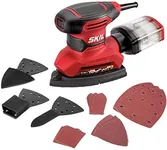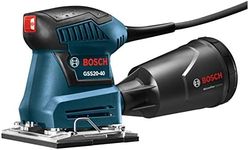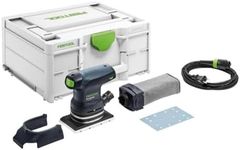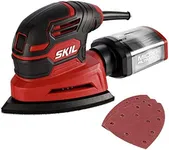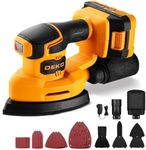Buying Guide for the Best Detail Sanders
Choosing the right detail sander can make your woodworking or DIY projects much easier and more enjoyable. A detail sander is a small, handheld power tool designed for sanding in tight spaces, corners, and intricate areas where larger sanders can't reach. When picking a detail sander, it's important to consider how you'll use it—whether for furniture refinishing, craft projects, or home repairs. Understanding the key features will help you select a sander that fits your needs and makes your work more efficient and comfortable.Power SourceThe power source refers to how the sander is powered—either by electricity (corded), battery (cordless), or sometimes even manually. Corded sanders provide consistent power and are great for longer tasks, but they require access to an outlet and can be limited by the cord length. Cordless sanders offer more freedom of movement and are ideal for quick jobs or working in areas without easy access to power, but their battery life can limit how long you can work at a time. If you plan to use your sander for extended periods or heavy-duty tasks, a corded model might be best. For portability and convenience, especially for small or occasional jobs, a cordless sander could be the right choice.
Sanding Pad Shape and SizeThe shape and size of the sanding pad determine how well the sander can reach into corners and tight spaces. Most detail sanders have a triangular or teardrop-shaped pad, which is perfect for getting into edges and awkward spots. Smaller pads are better for intricate work and fine details, while larger pads can cover more area quickly but may not fit into very tight spaces. If your projects involve a lot of corners, curves, or small surfaces, look for a sander with a smaller, pointed pad. For larger, flatter surfaces, a bigger pad might be more efficient.
Speed SettingsSpeed settings refer to how fast the sanding pad moves, usually measured in oscillations or orbits per minute. Some sanders have a single speed, while others offer variable speed controls. Variable speed allows you to adjust the sander for different materials and tasks—slower speeds for delicate surfaces and higher speeds for removing more material quickly. If you work with a variety of materials or need more control, a sander with variable speed is a good choice. For simple, straightforward jobs, a single-speed sander may be sufficient.
Dust CollectionDust collection is the system that helps capture the dust created while sanding. Some sanders have built-in dust bags or can be connected to a vacuum. Good dust collection keeps your workspace cleaner and reduces the amount of airborne dust, which is better for your health and makes cleanup easier. If you often work indoors or are sensitive to dust, look for a sander with an effective dust collection system. For occasional outdoor use, this feature may be less critical.
Weight and ErgonomicsWeight and ergonomics refer to how heavy the sander is and how comfortable it is to hold and use. Lighter sanders are easier to maneuver, especially for long periods or when working overhead. Ergonomic designs with comfortable grips reduce hand fatigue and make the tool easier to control. If you expect to use the sander for extended sessions or have smaller hands, prioritize a lightweight, well-designed model that feels comfortable in your grip.
Ease of Sandpaper ChangeThis feature describes how simple it is to replace the sandpaper on the sander. Some models use hook-and-loop (like Velcro) systems, while others require clips or adhesive. Quick and easy sandpaper changes save time and frustration, especially if you need to switch grits frequently during a project. If you value convenience or anticipate changing sandpaper often, look for a sander with a user-friendly sandpaper attachment system.


